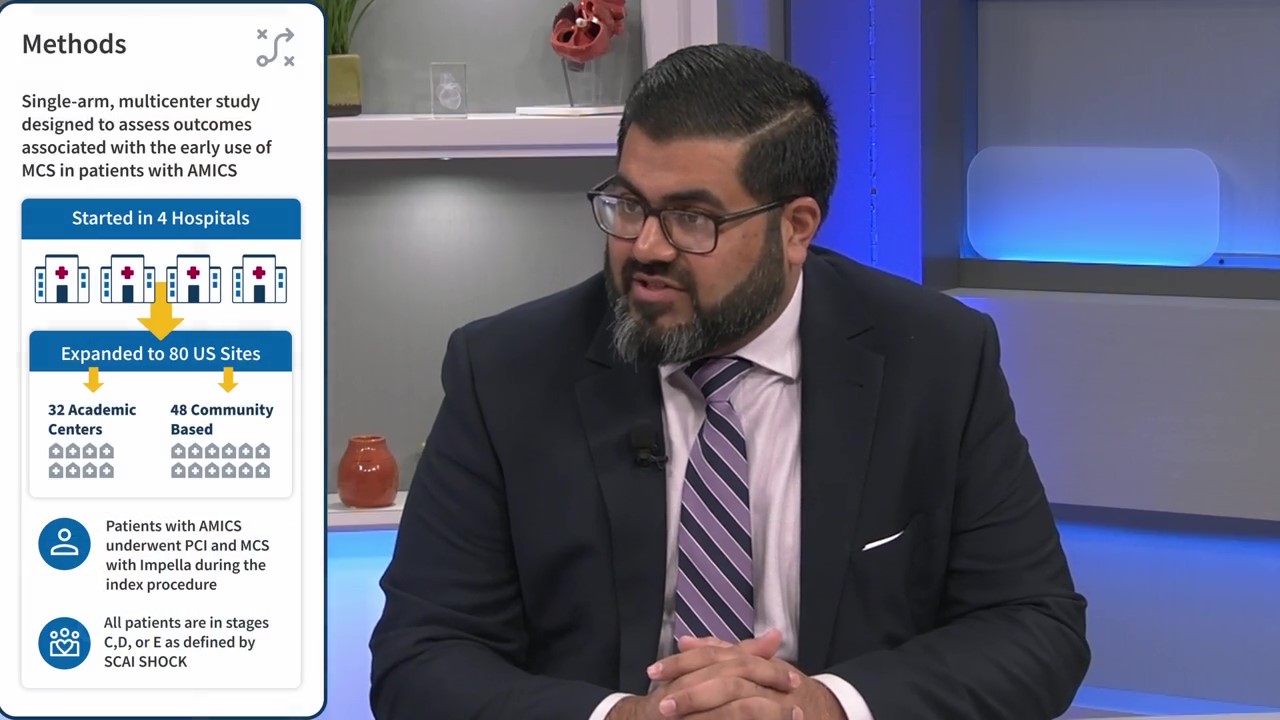Impella Education, AMI Cardiogenic Shock, Right Heart Failure, Surgical Applications
EACTS 2023 Scott Silvestry: Impella 5.5® and Impella RP Flex® Heart Pumps in the US
Scott Silvestry, MD, discusses his experience with the Impella 5.5® and Impella RP Flex® (Please note that Impella RP Flex (R) is not available in Europe) at the European Association for Cardiothoracic Surgery (EACTS) 2023 annual meeting. Dr. Silvestry is the surgical director of the thoracic transplant/ECMO/shock programs at AdventHealth Transplant Institute in Orlando, Florida.
Dr. Silvestry presents the Impella 5.5 program outcomes from his institution where they have inserted Impella 5.5® in 318 patients as of the date of the presentation. “This is a fantastic device which has become the workhorse of our programs,” Dr. Silvestry remarks. The predominant use for Impella 5.5 at his institution is weaning to recovery or weaning to next therapy. A significant number of patients have acute myocardial infarction cardiogenic shock (AMICS), cardiomyopathy, or postcardiotomy cardiogenic shock (PCCS). They also use Impella 5.5 in elective high-risk surgery and pre-op surgery as well as in a small number of ablation and high-risk percutaneous coronary intervention (HRPCI) cases.
Dr. Silvestry discusses 2 cases supported with Impella 5.5. The first is a 75-year-old patient with ischemic cardiomyopathy who was supported with Impella 5.5 until transplant. At the time of transplant, the patient had normal creatinine and normal liver function and he was eating, ambulating, and free of infection. “All of these things allowed us to get this patient where we needed to go, despite the fact that he had what would really be described as a horrific RV,” Dr. Silvestry explains. The second patient was a 59-year-old with ischemic cardiomyopathy and cardiac arrest who had acute RV dysfunction. Dr. Silvestry describes this patient as typical of the patients they see, stating, “many places would just put this patient on ECMO.” Instead, Dr. Silvestry took this patient to the OR, inserted Impella 5.5, and the patient improved by the next day.
Dr. Silvestry notes that the “secret sauce” for his team is having NPs and PAs trained to do bedside echocardiograms and adjust Impella under physician supervision. He also highlights the improved fixation and stability and simplified line management on the next generation Impella 5.5 S2.
Dr. Silvestry then discusses his experience with Impella RP Flex® in more than 20 patients so far. He explains that his preferred access for the RP Flex is subclavian although they have also used internal jugular (IJ) and even femoral access. He explains that it is easily inserted once the guiding catheters are placed and he provides a few insights for appropriate positioning. “We have never not been able to place an RP Flex,” he emphasizes. Dr. SIlvestry also highlights key benefits of the RP Flex including single vascular access, no sternotomy required, no extracorporeal circulation, flow >4 L/min, and 3-point fixation allowing patient mobility.
He concludes that the Impella 5.5 and RP Flex have allowed him to bridge patients very effectively. “We’re reaching for sternotomy, bivads, significantly less,” he notes. “Most of the patients we can bridge without doing that.”
Sign Up for Latest Updates
NPS-3992


